 Politics
Politics  Politics
Politics  Weird Stuff
Weird Stuff Ten Bizarre Facts About The Doge Meme
 Our World
Our World 10 Ways Your Christmas Tree Is More Lit Than You Think
 Movies and TV
Movies and TV The 10 Coolest Stars to Set Sail on The Love Boat
 History
History 10 Things You Didn’t Know About the American National Anthem
 Technology
Technology Top 10 Everyday Tech Buzzwords That Hide a Darker Past
 Humans
Humans 10 Everyday Human Behaviors That Are Actually Survival Instincts
 Animals
Animals 10 Animals That Humiliated and Harmed Historical Leaders
 History
History 10 Most Influential Protests in Modern History
 Creepy
Creepy 10 More Representations of Death from Myth, Legend, and Folktale
 Politics
Politics 10 Political Scandals That Sent Crowds Into the Streets
 Weird Stuff
Weird Stuff Ten Bizarre Facts About The Doge Meme
 Our World
Our World 10 Ways Your Christmas Tree Is More Lit Than You Think
Who's Behind Listverse?

Jamie Frater
Head Editor
Jamie founded Listverse due to an insatiable desire to share fascinating, obscure, and bizarre facts. He has been a guest speaker on numerous national radio and television stations and is a five time published author.
More About Us Movies and TV
Movies and TV The 10 Coolest Stars to Set Sail on The Love Boat
 History
History 10 Things You Didn’t Know About the American National Anthem
 Technology
Technology Top 10 Everyday Tech Buzzwords That Hide a Darker Past
 Humans
Humans 10 Everyday Human Behaviors That Are Actually Survival Instincts
 Animals
Animals 10 Animals That Humiliated and Harmed Historical Leaders
 History
History 10 Most Influential Protests in Modern History
 Creepy
Creepy 10 More Representations of Death from Myth, Legend, and Folktale
10 Insane Attempts At Rewriting History
Although we’re sure that the big events like wars and massacres happened, pseudohistorians and politicians thrive on reexamining and ultimately rewriting history—leading to some bizarre theories on what happened in our collective past.
10 Nanking Massacre Denial
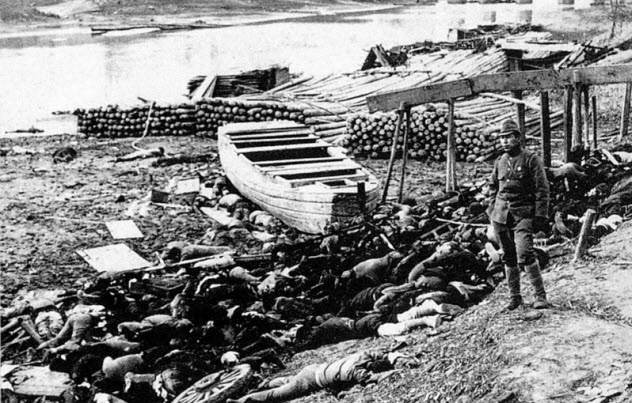
For the city of Nanking, the months between December 1937 and March 1938 were so brutal that the word “nightmare” doesn’t begin to cover it. Mainstream historians estimate that between 250,000–300,000 people died, many of them women and children. Often, the victims were first beaten, raped, or both. Many also witnessed the horrific murders of their loved ones.
However, some Japanese historians believe that the events in Nanking have been blown out of proportion. They contend that these acts were simply the usual killing and looting that happens during war.
A full-scale war between Japan and China had started earlier in 1937. By December, Nanking was at the heart of what New York Times reporter Tillman Durdin described as “one of the great atrocities of modern times.” Even Nazi generals spoke out against the horrors they saw. But decades later, Japan refused to admit—or apologize for—the horrific events that had happened there.
In 1999, journalist Iris Chang was on the verge of publishing a book called The Rape of Nanking when it was abruptly pulled by its American publisher because of pressure from Japan. Chang had been instructed to make changes to the book that would lessen the event’s impact. She refused.
According to Bill Guttentag and Dan Sturman, who visited Japan in 2006 to film a documentary, the levels of denial for some Japanese range from claims that propaganda exaggerated a minor event to the belief that it never happened. In the museum near the Yasukuni Shrine, Nanking is completely overlooked, and it’s claimed that Japan was forced into World War II by the US as a means of lifting America out of the Great Depression.
Some of the women who survived the initial Rape of Nanking were forced to work as sex slaves in Japan’s notorious “comfort stations.” Although Japan issued an apology about the “comfort women” in 1993, the denial over the Rape of Nanking is so great that there was even debate over whether that apology should be rescinded.
9 The Waffen SS And The HIAG
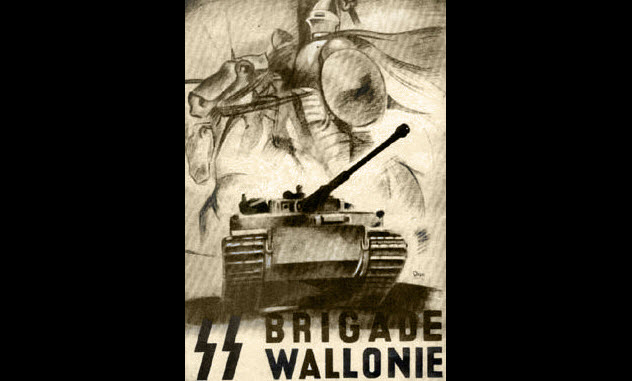
The Waffen SS was established by Heinrich Himmler in 1939. Over the course of the war, the original four divisions grew to more than 20. Over 500,000 people wore the badge of this elite force.
Like all members of the SS, they weren’t subject to the same laws as the rest of Germany’s civilians and military personnel. However, after the war, there was an odd movement to elevate the Waffen SS to a heroic status, even though it had been described as a “criminal organization” and its members as “war criminals” during earlier proceedings at The Hague.
Nevertheless, some German political parties made an appeal to the Waffen SS veterans. Certain newspapers also claimed that these veterans had been mistakenly confused with the gestapo. Finally, the Mutual Help Association (HIAG) was formed to support Waffen SS veterans and whitewash their role in the war.
The HIAG was accused of falsifying records and paperwork by scholars in Bielefeld. Many HIAG members had been on trial for war crimes. The HIAG also claimed to represent about two million veterans when the real number was closer to 20,000. But this misrepresentation succeeded in giving the HIAG major political clout in postwar Germany.
The HIAG convinced the new German leaders that the Waffen SS largely denounced Nazism and had selflessly taken on the role of pariah. They claimed to have been reformed. But the Bielefeld scholars found that the HIAG members had a good reason for rewriting their history: They wanted their pensions.
So how reformed were the members of the HIAG? In 1953, they organized a solstice parade that included singing the old classic “This Is the Guard That Adolf Hitler Loves.” The HIAG was finally dissolved in 1992.
8 The American Civil War And Slavery
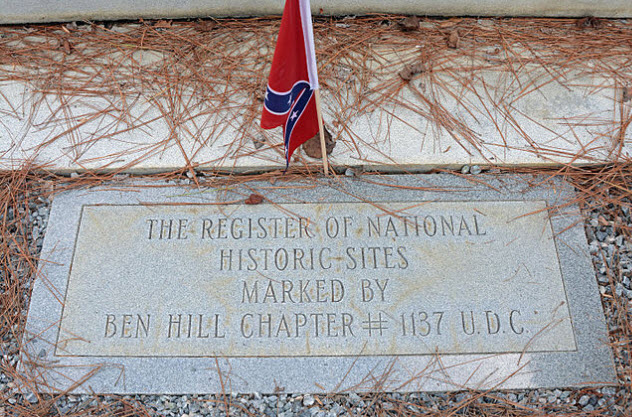
Ask most people why the US fought a civil war, and they’ll probably answer that the country was fighting over whether slavery should be legal. But even today, many schools in the Deep South teach students that the Civil War was about states’ rights and constitutional law.
In 2011, the Pew Research Center found that about half the people they surveyed thought the Civil War had been fought over a difference in opinion about constitutional law. Although Lincoln gave speeches about slavery dividing the country, the United Daughters of the Confederacy (UDC) has made a hugely successful run at rewriting that history.
Established in 1894, the UDC was the premiere ladies’ organization for anyone who was—or was married to—a person of some importance in the Confederacy. While they did a lot of good work—like preserving cemeteries and historic sites and supporting otherwise homeless veterans—they also traveled widely to speak about what makes “the Confederate soldier the most majestic in history.”
Speaker Mildred Lewis Rutherford eventually published a book called The Truths of History, which claimed to expose the truth of Lincoln’s weak intellect, the South’s plan to free its slaves, and the Ku Klux Klan’s true role as a peacekeeping organization. The book caused a major schism in what was taught in schools.
With education a federal matter for the first time in history, Southern textbooks were written by authors who had previously served in the Confederate government. It became rather common for any Southerner who suggested that the Civil War had been about slavery to be subject to ridicule, unemployment, blackballing, and social shunning.
How successful was it? In 2010, a group of South Carolinians proudly attended a Secession Ball commemorating the 150th anniversary of their state’s withdrawal from the Union. They also honored their native sons who had died protecting their homes against the aggression of the North.
7 The Black Legend
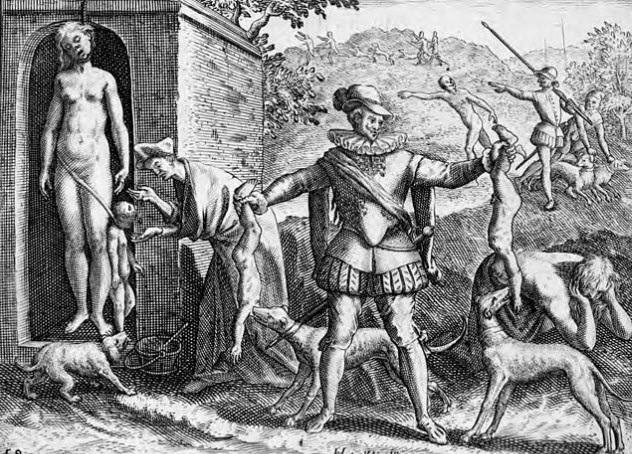
From the Spanish Inquisition to the atrocities committed by the conquistadors and explorers in the New World, the Spanish are at the center of many terrible events in history. However, according to some people, this negative view of Spain’s history is not justified. They blame the Black Legend for the misrepresentation of Spain’s role in historical events.
In 1914, Julian Juderias coined the phrase “Black Legend” when he claimed that many of the stories told about the terrible actions of Spain and its citizens were mostly propaganda. According to Juderias, other nations, especially Italy, wanted to erase from history all that was good, cultured, and civilized about Spain.
However, this type of thinking actually began shortly after the publication of the treatise A Brief Account of the Destruction of the Indies in the 1550s. The manuscript, written by Spain’s Bartolome de las Casas, exposed many of the atrocities that were occurring in the New World.
Although this account was initially permitted to circulate throughout Spain and into Europe, Philip II banned the book when he took the throne only a few years later. At the same time that Spain’s international power was declining, public opinion toward the treatise turned negative.
By the beginning of the 17th century, the book reappeared a few more times. However, it was always denounced as a vile exaggeration of events written to delight the same foreign powers that were reveling in Spain’s misfortunes. Meanwhile, there was a growing belief that Spain’s atrocities had been exaggerated.
In Germany, it was said that the Spanish were vilified because of their darker complexions and their tainted blood, which had mixed with that of the Jews and the Moors. As dark tales spread about Spain’s actions at home and abroad, so did the claims that such stories were products of envious nations disseminating propaganda and hate.
6 The Battle Of Agincourt
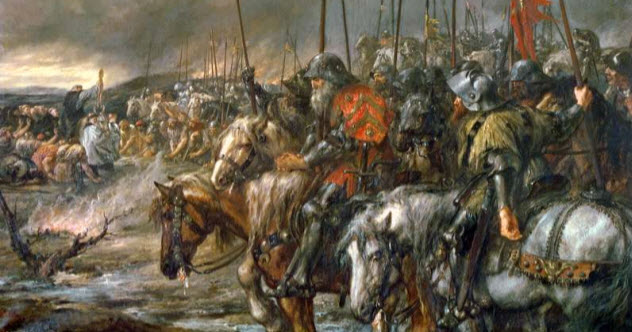
According to accepted history, Henry V led the English army to complete victory over the French despite being outnumbered 5 to 1. The Battle of Agincourt has long been one of the most celebrated defeats of the French, with the episode leading Shakespeare to coin the term “band of brothers.”
However, a team of British and French historians decided to take another look at the battle, which has long stood as a testament to the longbow’s power in combat. It was also considered to be one of the greatest victories in the face of dismal odds. All historians agree that Henry V landed in France on August 14, 1445, allied himself with the Burgundians, and led a weary, disease-plagued group across the Somme River.
From there, it’s the story that everyone knows from mainstream history and Shakespeare. But a group of historians led by Southampton University’s Anne Curry looked at contemporary documents from tax records, military rosters, pay records, ships’ logs, wartime levies, and lists of the dead and the wounded. Contrary to the belief that the English were outnumbered 5 to 1, their analysis suggested that it was only about 2 to 1. It’s even possible that the two sides were evenly matched.
No matter how it was won, the Battle of Agincourt was nothing short of horrific. To maintain his popularity on the home front, Henry V and his advisers probably stressed the incredible odds that the army had overcome as justification for the battle. It also gave them a reason to celebrate the might of the English army, rather than a loss of life to blame on the crown.
5 The Pink Swastika
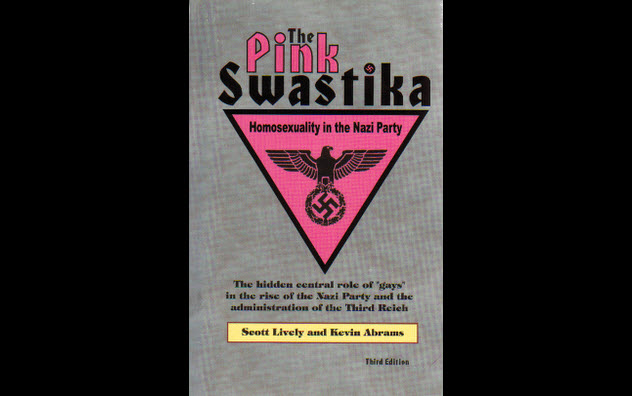
The list of people that the Nazis didn’t like is a long one. At the top of that list was anyone who was homosexual, particularly males. Although homosexuality was illegal in pre-Nazi Germany, the Nazis increased the level of persecution against men whom they deemed to be weak and incapable of benefiting the Nazi war machine.
Research was targeted, too. In 1933, tens of thousands of works from the Institute for Sexual Science in Berlin were destroyed by storm troopers. Those who were convicted of homosexual acts or thoughts were sentenced to prison or concentration camps and identified by pink triangles.
According to Scott Lively and Kevin Abrams, two extremely antigay conservative Christians, the blanket hatred of gays wasn’t exactly true. In their book The Pink Swastika: Homosexuality in the Nazi Party, Lively and Abrams claim that the individuals responsible for the founding of the Nazi Party were “masculine-oriented homosexuals” who hid their preferences from the general public and hated those homosexuals who didn’t.
First published in 1995, the book claims that the Nazi Party was formed with one major goal in mind: the persecution and destruction of “effeminate-oriented homosexuals” who had made their lifestyle public. Supposedly, the Nazis were all about being the right kind of gay and getting rid of the wrong kind.
According to the book, the Nazis originally met in gay bars. Their infamous Nazi salute became popular because of its connection to a group that was the German version of America’s Boy Scouts. The authors also claim that Hitler Youth recruited young men into the Nazi Party to turn them into the right kind of gay, which is why the organization was known as “Homo Youth.”
Lively and Abrams argue that all of the Nazi Party’s symbolism—from the SS lightning bolts to the symbols that identified concentration camp prisoners and their offenses—was rooted in the gay occult. Supposedly, every law and doctrine issued by the gay leaders of the Nazi Party furthered their antigay agenda.
Lively was also featured in the news when he helped to lay the groundwork for Uganda’s 2014 antihomosexuality bill, which is also known as the “kill the gays” bill.
4 Cambodian Genocide Denial

The death and devastation that was visited upon Cambodia as the Khmer Rouge swept through the country was mind-blowing, but that didn’t stop a number of Western scholars from denying that these atrocities were taking place. Writers like Noam Chomsky conveniently overlooked the staggering human rights violations that were occurring, and strangely, it’s a denial that continues today in Cambodia itself.
In June 2013, thousands of protesters expressed their rightful outrage when opposition party president Kem Sokha claimed that the atrocities—and bodies—from the Tuol Sleng prison weren’t real. Instead, he claimed that they were an invention of the Vietnamese, who drove the Khmer Rouge out of Cambodia. The issue became even more clouded when Sokha declared that he had never said such a thing, his words had been taken out of context, and the entire episode had been blown out of proportion by Cambodia’s ruling party.
That appeared to be the last straw for the Cambodian government. In a rush to pass new legislation on the issue, Prime Minister Hun Sen put a bill before a special session of the government, making it illegal to deny the atrocities committed by the Khmer Rouge. Such an act is now punishable by up to two years in jail.
Sen was a commander in the Khmer Rouge who switched sides and defected to Vietnam a few years before the Vietnamese pushed the Khmer Rouge out of Cambodia in 1979. He took a definite stance on the issue of rewriting any of Cambodia’s dark history by publicly stating: “Anyone who says there was no Khmer Rouge genocidal regime in Cambodia has to be punished.” However, some think that his laws were motivated by political gain.
3 Japanese Society For History Textbook Reform
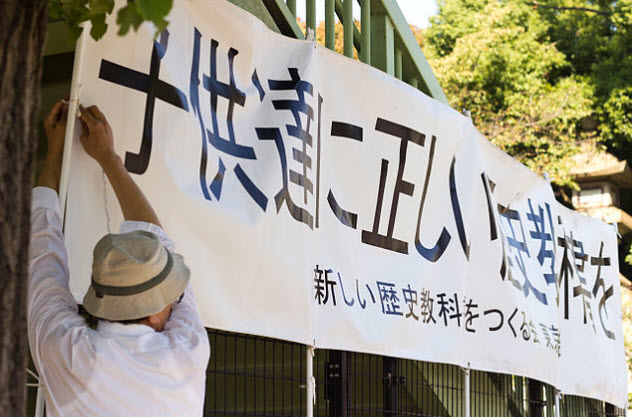
The events in Nanking aren’t the only episode in Japanese history that some are trying to hide. The Japanese Society for History Textbook Reform started speaking out in the 1990s about textbooks that painted Japan as an aggressor during the years around World War II. They believe that such a characterization must be eliminated if Japan is to regain its sense of national pride.
Many Japanese fear that today’s students will no longer respect their ancestors after they learn about the atrocities that were committed. A pamphlet put out by the Japanese Society for History Textbook Reform goes into astounding detail on why history needs to be rewritten.
In addition to putting Japanese students on a course for success, the documentation claims that Japan has been wrongly saddled with guilt over the actions that occurred in World War II. According to these revisionists, many of the so-called “victims” of Japanese aggression actually visited these horrible actions upon themselves and then blamed the Japanese.
One of the targets of the pamphlet is a commonly reproduced mural that shows a soldier cutting and torturing a bound captive in China. According to the pamphlet, no good can come from showing students these images, and the torture depicted—the cutting off of a person’s breasts—was common in Chinese culture anyway. The revisionists argue that it wasn’t Japan’s fault, even if it did happen.
School textbooks in Japan go through an extensive screening process by the Ministry of Education. In 1965, historian Saburo Ienaga found the process so abhorrent that he filed lawsuits against the ministry. They had insisted that he leave “dark” things like air raids and post-nuclear blast ruins out of his proposed textbooks. Three lawsuits and 30 years later, the highest courts ruled that the ministry could continue to screen textbooks, but some of Japan’s darker history would be taught. That ruling occurred in 1997.
2 Denial Of The Holodomor
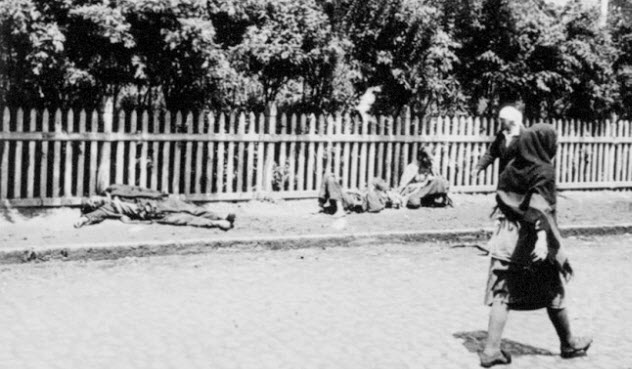
Holodomor means “death by hunger,” and that’s exactly what happened to the people of Ukraine from 1932 to 1933. As many as 25,000 people died every day during the famine, which was orchestrated by Joseph Stalin.
Homes, farms, livestock, and all of the basic supplies needed for life were confiscated. People were shot or deported to the farthest reaches of Siberia, and outsiders were not allowed in the country. Even mentioning famine or hunger could get a person thrown in jail. But denialists claim that it never happened.
As far as the Soviet Union was concerned, the death of around four million Ukrainians was either propaganda or mass delusion. While it was going on, the crackdown on travel in and out of the Ukraine and even between communities meant that the Western world didn’t know what was happening. Later, information came from the few survivors who managed to escape Ukraine after the famine. Those survivors compiled their stories into an archive that was immediately dismissed.
It wasn’t until the anniversary of the famine in 1983 that Western scholars began to look more closely at the events of the Holodomor. Even then, denial was rampant. It was endlessly debated whether the Holodomor had been a conscious attack on the Ukraine or just a consequence of policy gone wrong.
In 1988, American historian James Mace compiled volumes of information on the Holodomor that finally forced people to confront the reality of this tragic occurrence in Ukraine’s history. Although the Holodomor could no longer be dismissed as a fabrication of Ukrainian refugees, the millions of Ukrainian deaths from the famine were only written into the history books after Ukraine gained its independence in 1991.
1 The Economic Motivation Behind The Constitution
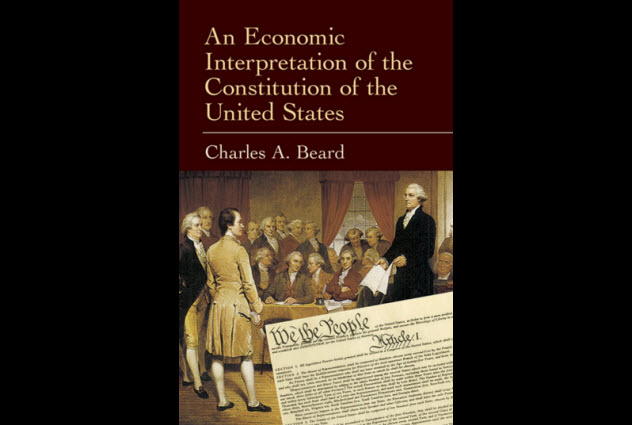
In his book An Economic Interpretation of the Constitution of the United States, Columbia University professor Charles Beard claimed the the US Constitution was written by men who were out for themselves. He also said that we needed to reevaluate our collective belief that the Founding Fathers were selfless and valiant.
The basis of his claim was that those who wrote the Constitution were mostly wealthy landowners, and those who supported it at the state level were also of the wealthy upper class. These rich people had invested in the American Revolution, and once it was over, they wanted to make their investment back.
The Articles of Confederation didn’t include tax laws that would allow for the repayment of these debts. So the Constitution was drafted—along with strong tax laws—to make sure that the wealthy got their money back.
Beard was a personal friend of Woodrow Wilson. For a time, his theory was considered to be sound and was even taught in colleges. It wasn’t until the 1950s that more research was conducted on the matter by historian Forrest McDonald.
McDonald collected a huge amount of data on the thousands of men who had gone on record as being involved in the debate over the Constitution. He found that there was no trace of the supposed correlation that Beard had reported between men who had public holdings and those who voted in favor of the Constitution.
Some of Beard’s data and conclusions were simply wrong. The examples he had used to back up his theory just weren’t true. Some of the men he had accused of supporting the Constitution to safeguard their own wealth weren’t even rich or had acquired their money after the Constitution was ratified.
Beard’s attempt at rewriting constitutional history was briefly successful. But the 1950s research appeared to uncover his true agenda. His work was meant to support a more contemporary, progressive reform movement that would try to equalize the distribution of wealth in his day. By characterizing the supporters of the Constitution as selfish, greedy men, the redistribution of wealth appeared to be a move that was simply righting an old wrong. He almost pulled it off.








